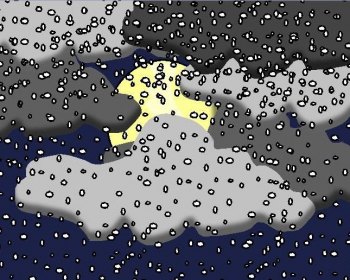The Cartoon Truth:
A dark December -- the Conestoga massacre

Native American men, women and children were massacred by the Paxton Boys.
On Dec. 14, 1763, 50 men from Pennsylvania's western frontier “killed and scalped six Indians –three men, two women and a child -- and burned their homes,” wrote historian Alden T. Vaughan in “Philadelphia Under Siege,” in the American History journal (February 1999).
This gang became known as the Paxton Boys. The six Native Americans they killed at Conestoga Manor were only a part of the tribe. An additional 14 happened to be away from the settlement selling brooms and bowls, and in an attempt to protect them, local officials locked them in a Lancaster workhouse. It didn’t work.
Two weeks later, on Dec. 27, more than two dozen frontiersmen from the Paxton gang – armed with rifles, tomahawks and knives – rode into town, ignored the sheriff’s pleas and broke down the workhouse door. They slaughtered every Native American man, woman and child, mutilating and scalping some of the victims. (The number of victims in some accounts is reported as 20; in other accounts it is 21.)
The cruel and inexcusable murders set off a crisis in Philadelphia and formed a window into the Colonials' sputtering attempts to live peaceably alongside people of another culture. Pennsylvania's lieutenant governor offered a reward for information leading to the ringleader’s arrest. There were no takers.
Many frontiersmen supported the Paxton Boys. “Even a Paxton clergyman who tried to dissuade the men from their intended crimes refused to identify a single participant,” Vaughan wrote.
To be sure, the massacre occurred in the shadow of one of history’s most significant Native American conflicts: Pontiac’s Rebellion. In the aftermath of the French and Indian War, tribes found themselves at odds with the British – and an ever-increasing number of settlers. Led by the Ottawa chief Pontiac, the tribes formed a confederacy aimed at expelling the settlers.
The frontiersmen thought of the Conestoga as treacherous and accused them of providing aid to hostile tribes.
But the Conestoga were described by townsmen as peaceful, and besides, even toddlers were among the dead. The victims included seven men, five women and eight children, according to the book, Peaceable Kingdom Lost, The Paxton Boys and the Destruction of William Penn’s Holy Experiment by historian Kevin Kenny (Oxford University Press; 2009).
While the frontiersmen argued that the murders were necessary, not everyone agreed. The state had been founded by Quakers, after all. As the Quakers saw it, the frontiersmen were out of control. As the frontiersmen saw it, the pacifistic Quakers were unwilling to defend the frontier.
After killing the Conestoga, hundreds of armed frontiersmen marched toward Philadelphia in February 1764, determined to kill 140 Native Americans known as “Moravian Indians” for their association with a group of German Moravian missionaries.
Roughly 500 citizens agreed to form a volunteer army to defend Philadelphia against the Paxton gang. A compromise, led by prominent citizens -- including Benjamin Franklin -- headed off violence. The marchers were given amnesty if they disbanded and returned home. The government agreed to consider their grievances.
In Peaceable Kingdom, Kenny writes, “Nobody was arrested or prosecuted after the massacres, which encouraged other settlers to behave in similar ways. The result was wave after wave of violence on the frontier, culminating in total war against Indians during the American Revolution.”
See this and other animations on our sister website, CartoonTruth.com.
Recommended:
“Philadelphia Under Siege,” by Alden T. Vaughan in the journal American History, 1999. (Available through databases at libraries.)
Desperation, Zeal and Murder: The Paxton Boys, by Andrew Kirk (Pennsylvania Center for the Book).

